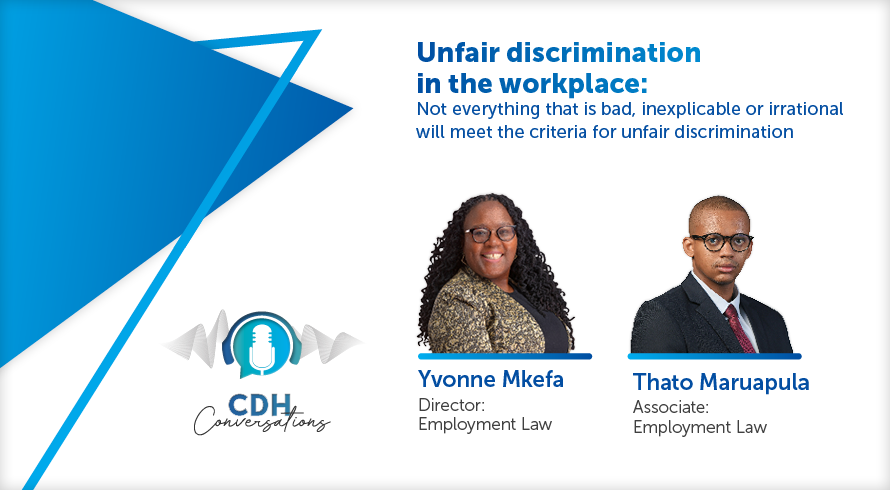DMRE closing the regulatory gap – draft artisanal and small-scale mining policy published for comment
At a glance
- The Department of Mineral Resources and Energy (DMRE) in South Africa has published a Draft Artisanal and Small-Scale Mining Policy to regulate artisanal and small-scale mining (ASM) separately from large-scale mining operations.
- The ASM Policy aims to address the challenges of illegal mining activities, provide definitions and regulations for ASM, and incorporate ASM into the existing regulatory framework.
- The policy proposes the introduction of Artisanal Mining Permits and Small-Scale Mining Permits, improved collaboration among government departments, incentives for compliance, simplified tax collection, and measures to tackle illegal mining. Public comments on the policy are invited until June 17, 2021.
While this has been attributable to many socio-economic, financial and historical complexities, two main factors that emerge are (i) the preponderance of illegal mining activities and (ii) the fact that the primary mining statute, the Mineral and Petroleum Resources and Development Act 28 of 2002 (MPRDA), does not specifically recognise artisanal or small-scale operations.
In a deliberate and long-awaited move, the Department of Mineral Resources and Energy (DMRE) published a Draft Artisanal and Small-Scale Mining Policy 2021 (ASM Policy) for public comment on 5 May 2021. For the first time, the ASM Policy defines and gives context to artisanal mining (the most basic form of mining that requires only rudimentary tools and customary methods) and small-scale mining (operations on a low mechanised scale) as distinguishable mining forms, and importantly makes provision for their regulation in a way that specifically caters for the nuances of the respective operations.
In ten chapters, the ASM Policy seeks to remedy various shortfalls and includes proposals aimed at their redress, with a specific focus on conceptualising ASM, eliminating illegal mining activities, distinguishing ASM from illegal mining, and accommodating ASM in the regulatory framework. To give context to South Africa’s illegal mining problem, illegal miners in South Africa, referred to in common parlance as “Zamazamas”, frequently risk their lives undertaking underground and/or surface mining by entering abandoned mines, closed off mines and in increasing cases operating mines. Illegal mining is often small-scale and it brings with it a range of negative socio-economic, criminal and financial impacts. Zamazamas are sometimes erstwhile employees of the mines and thus have some expertise, however they tend to use extremely hazardous and environmentally destructive refining methods and chemicals, and their illegal operations result in loss of revenue, taxes, employment opportunities, capital expenditure, exports, foreign exchange earnings and procurement generated by legal mining.
From a regulatory perspective, artisanal and small-scale mining are not recognised by the MPRDA as a distinguishable forms of mining. Instead, the MPRDA differentiates mining in terms of whether the requirements for the granting of a mining permit in terms of section 27 of the MPRDA, or a mining right in terms of section 22 of the MPRDA are met. All activities that are not conducted on an industrial scale requiring a mining right, including ASM activities, must then be conducted in terms of a mining permit. However, obligations prescribed by the MPRDA to obtain a mining permit are too onerous to meet for entities conducting small-scale operations. As even small-scale miners have struggled to satisfy the permit requirements, there is little to no possibility of artisanal miners satisfying the requirements.
The DMRE’s publication of the ASM Policy seeks to address some of the above regulatory gaps and shortfalls of the MPRDA to accommodate the artisanal and small-scale mining operations. Pursuant to the public representations received by the DMRE it is envisaged that the government policy proposals will ultimately find their way into enforceable legislation.
Some of the noteworthy points from the ASM Policy are as follows:
The ASM Policy proposes that the MPRDA provides for two additional types of permits, namely: (i) an Artisanal Mining Permit; and (ii) a Small-Scale Mining Permit. A dual licencing method is also proposed whereby the existing licencing method will co-exist with a licencing method specifically designated for the ASM industry. Reporting systems that are tailored for the ASM industry are also suggested.
The ASM Policy also seeks to foster improved collaboration and co-ordination among key government departments including, amongst others, the Department of Trade, Industry and Competition, and the Department of Forestry, Fisheries and the Environment. Mechanisms to incentivise compliance with environmental management, health, safety and water use requirements are also sought to be introduced. Further, training and skills development in collaboration with the Mining Qualifications Authority is proposed so as to equip artisanal and small-scale miners with the requisite knowledge and skills regarding environmental management, health and safety and business management.
It is endeavoured that artisanal and small-scale miners be part of the greater economy by simplifying the tax collection system for ASM operations and encouraging the use of the various tax incentives introduced by the National Treasury. A Minerals and Precious Metals Theft Unit within the South African Police Service is also proposed so as to adequately deal with illegal mining.
Ultimately, through formalisation of the artisanal and small-scale mining sectors, the ASM Policy aims to foster sustainability of the industry and greater socio-economic impact. Further, it appears to make a called-for distinction between the illegal operations of Zamazamas from those informal operations of artisanal miners who operate outside the legal framework because their activities are not provided for, and because they are incapable of meeting the existing obligations of the MPRDA. It is hoped that the ultimate implementation of the ASM Policy, through legislative reform or otherwise, will yield a regulatory framework that serves and protects the interests of all role-players in the industry, and both incentivises and facilitates formal participation in the industry while discouraging illegal operations.
Comments and written representations are to be submitted to the DMRE by 17 June 2021. Should you wish to make submissions regarding the content and potential implications of the ASM Policy, our team is well-placed to assist you.
The information and material published on this website is provided for general purposes only and does not constitute legal advice. We make every effort to ensure that the content is updated regularly and to offer the most current and accurate information. Please consult one of our lawyers on any specific legal problem or matter. We accept no responsibility for any loss or damage, whether direct or consequential, which may arise from reliance on the information contained in these pages. Please refer to our full terms and conditions. Copyright © 2025 Cliffe Dekker Hofmeyr. All rights reserved. For permission to reproduce an article or publication, please contact us cliffedekkerhofmeyr@cdhlegal.com.
Subscribe
We support our clients’ strategic and operational needs by offering innovative, integrated and high quality thought leadership. To stay up to date on the latest legal developments that may potentially impact your business, subscribe to our alerts, seminar and webinar invitations.
Subscribe




